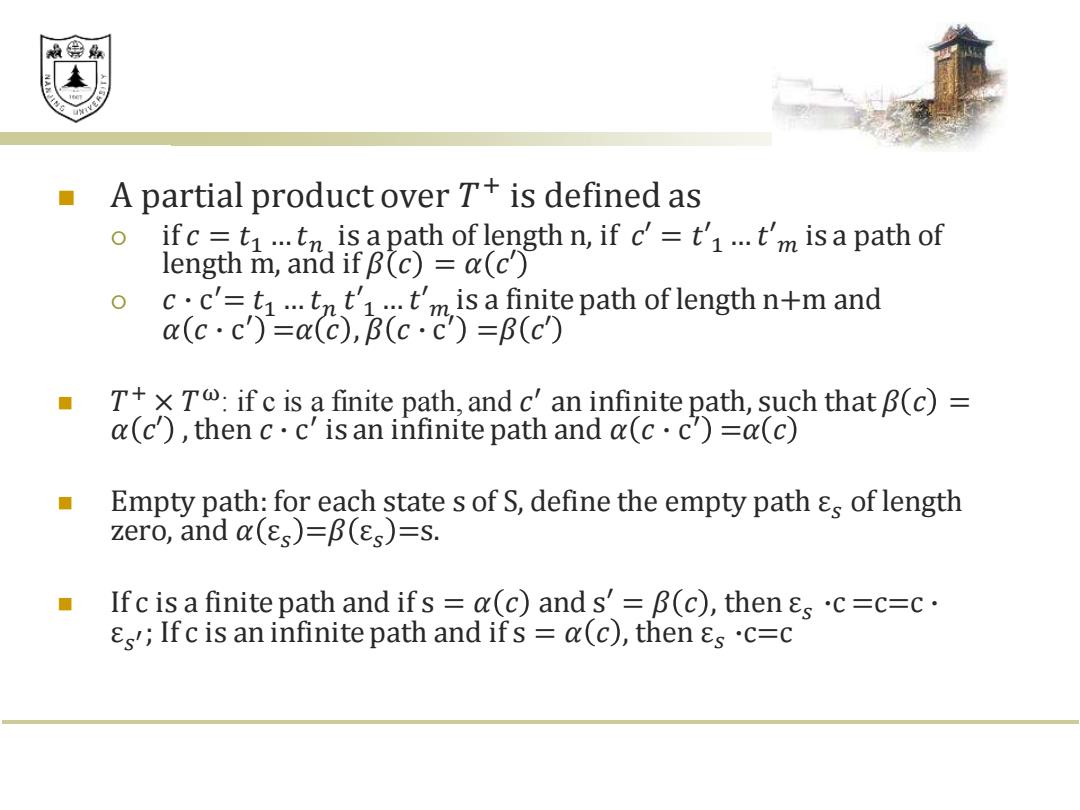正在加载图片...

效绵鼎 ■ A partial product over T+is defined as 0 ifc=ti...tn is apath of length n,if c'=t'1...t'm is a path of length m,and if B(c)=a(c) cc'=ti...tnt't'm is a finite path of length n+m and a(c·c)=a(C),B(c·c)=B(c) T+x T:if c is a finite path,and c'an infinite path,such that B(c)= a(c),then c.c'is an infinite path and a(c.c=a(c) Empty path:for each state s of S,define the empty path &s of length zero,and a(s)=B(s)=s. Ifc is a finite path and ifs a(c)and s'=B(c),then sc=c=c. Ifc is an infinite path and ifs =a(c),then s.c=c◼ A partial product over 𝑇 + is defined as if 𝑐 = 𝑡1 …𝑡𝑛 is a path of length n, if 𝑐′ = 𝑡′1 … 𝑡′𝑚 is a path of length m, and if 𝛽 𝑐 = 𝛼 𝑐′ 𝑐 ∙ c ′ = 𝑡1 … 𝑡𝑛 𝑡′1 … 𝑡′𝑚 is a finite path of length n+m and 𝛼 𝑐 ∙ c ′ =𝛼 𝑐 , 𝛽 𝑐 ∙ c ′ =𝛽 𝑐′ ◼ 𝑇 + × 𝑇 ω: if c is a finite path, and 𝑐 ′ an infinite path, such that 𝛽 𝑐 = 𝛼 𝑐′ ,then 𝑐 ∙ c ′ is an infinite path and 𝛼 𝑐 ∙ c ′ =𝛼 𝑐 ◼ Empty path: for each state s of S, define the empty path ε𝑠 of length zero, and 𝛼 ε𝑠 =𝛽 ε𝑠 =s. ◼ If c is a finite path and if s = 𝛼 𝑐 and s′ = 𝛽 𝑐 , then ε𝑠 ∙c =c=c ∙ ε𝑠 ′ ; If c is an infinite path and if s = 𝛼 𝑐 , then ε𝑠 ∙c=c